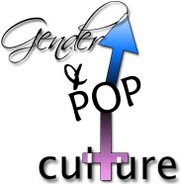So Target is the perfect first step. They have everything from electronics, to bikes, snacks and games. Just like every website the information for kids toys are very extensive and accessible. You go to the main page and hover over the word “kids” and several different categories pop up including “boys’ toys”, “girls’ toys”, and my new favorite the “Specialty Toy Shop.” Within this category was one subsection called “Understanding Diversity” under the Skill Building headline. Generally speaking, within this section there were two general types of games, various diversely colored dolls and “Hooked on Phonics” sets for learning a new language. How does that help promote and understand diversity? Girls can play with dolls and boys can do what exactly? These games don’t come close to defining and gaining a diverse outlook on life. This shell of a category exemplifies societies view on diversity; it pretends to make equality a forefront idea without truly putting thought into socializing our youth. For white children, “the assumption that race is an insignificant component of their identity is perpetuated” while for children of color “racial socialization occurs in a much more complex social environment”. This page didn’t even have games or toys that boys would even glance at, let alone gender neutral ones, yet it is prompted as “Understanding diversity”.
After my slight detour I found my way back on track, searching in the 8-9 age range. When I got to the page I was amazed to find that under “Shop by Interest” the boys and girls interested listed were so diverse. For boys they had listed Electronics, Action toys, Building Toys, Sports, Science and Vehicles. For girls they had listed Dolls, Creative Activities, Games, Tech Toys, and Dancing & Singing. These stereotypical categories are telling boys and girls what they should like, and parents what they should buy. What I found most interesting was how they advertised separately from one another. Even though there were two separate categories, Tech Toys and Electronics brought me to the same page. The fact that they did not think the word electronics would influence females’ shows you the importance of linguistics in advertising. Newman states that in some cases “gender-typed conversational behavior actually reflects power differences rather than gender differences” and in our society men are seen as more masculine and powerful.
When I clicked on Electronics I preceded to look for video games. I’m not very good at them but I know Charles and my friend play all the time, challenging each other constantly. As I scrolled through the selection of games for the PS2 I found a Power Rangers: Super Legends 15th Anniversary. It had brought back plenty of memories from when I was the Pink Power Ranger for Halloween when I was about 8 years old. I remember picking that color in order to conform to what society thought I should like. I know this because I always like the blue ranger the best but even back then I knew it would be more “appropriate” to pick one of the female ranger colors. Through the process of socialization this occurred, defined as “the way that people learn to act in accordance with the rules and expectations of a particular society” (Newman pg. 108). Now, this Super Legends video game is conforming in the same manor by defining who the legendary power rangers are. It didn’t say on the box what characters are included in the game but the cover alone speaks volumes. The cover is a picture of four different rangers, all male characters showing their defined muscles in very masculine poses. Even though all the rangers play a large role in every victory, I guess the Super Legends are considered to be brave, strong men.
The last items I looked through were roller-skates. As someone who loves playing sports and running around I find it sad how few kids are involved in daily exercise, even if we are just talking about tag. By looking for roller-skates I hoped to find a selection for both girls and boys in order to equally encourage outdoor fun and games that my friend and Charles could do together. The thought of gender neutral skates didn’t even cross my mind until I say all the gender specific colors with drastic male oriented colors like blue and green and drastic female colors like white and pink. Just as Messner points out in his Article Boyhood, Organized sports and the Construction of Masculinity “masculinity develops and changes as boys and men interact within the socially constructed world of organized sports.” They have to look and act a certain way to be considered a masculine individual. In this instance if a girl wore boy colored skates people would think little of it but if a boy was to wear pink skates he would be teased and scrutinized. This is just one of many double standards in our society.
These simple layouts of advertisements and ads truly enforce the idea that games imply normative gender roles and gender stereotypes. The current child driven consumers market geared towards separate advertising for the perceived gender roles influences children, their main customers. As consumers we must constantly be aware of the influence that gender roles have on our childhood.
Newman, David M. Portraying Difference: Race, Class, Gender and Sexuality in Language and the Media. New York: McGraw Hill 2007.
http://www.target.com/gp/search/602-0670499-9659009?field-keywords=skates&url=index%3Dtarget&ref=sr_bx_1_1&x=0&y=0
http://www.target.com/b/ref=sc_iw_r_2_0/602-0670499-9659009?node=219779011
http://www.target.com/b/602-0670499-9659009?rh=&fromBrowse=1&node=270213011&index=tgt-mf-mv&rank=salesrank&x=16&y=12
http://www.target.com/Power-Rangers-for-PlayStation-2/dp/B000R2YWBY/sr=1-7/qid=1217000977/ref=sr_1_7/602-0670499-9659009?ie=UTF8&index=target&rh=k%3Apower%20rangers&page=1
